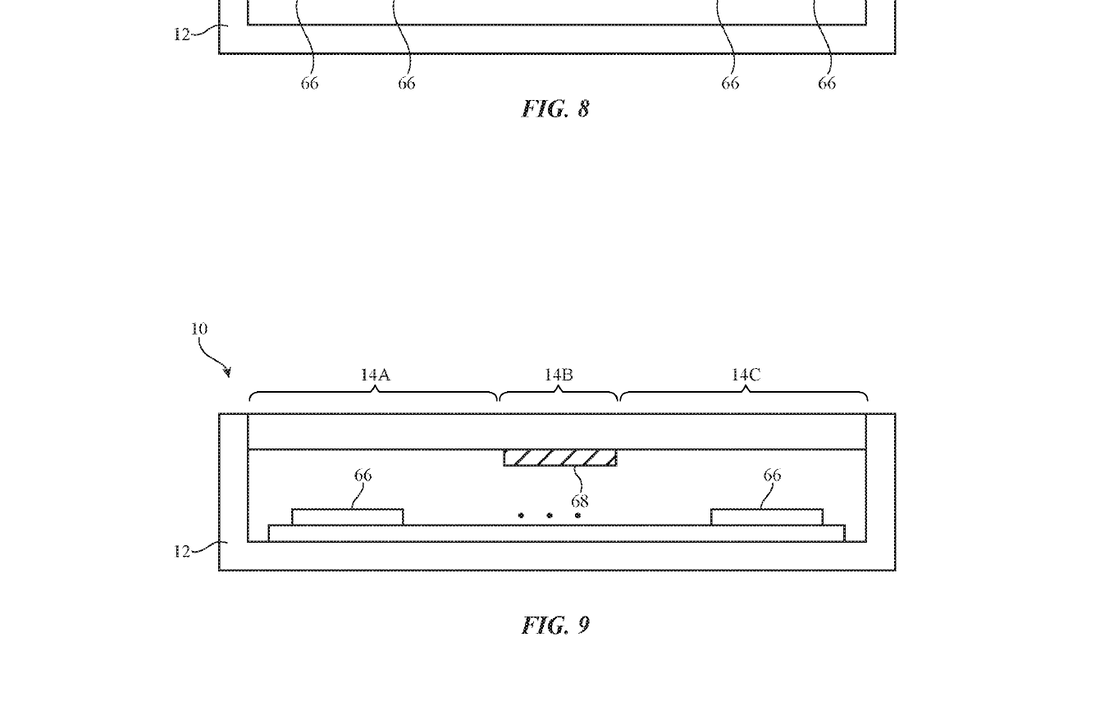Hot Apple Foldable
The patent grant, simply titled “Electronic Devices with Flexible Displays”, addresses a problem that has plagued foldable devices, that of creasing at the fold line. While the problem continues to be addressed by Samsung Display (pvt) and other OLED panel producers, Apple has noted that the problem increases as the temperature of the device decreases, as the flexibility of the foldable materials decreases in kind, and that decrease in flexibility can increase the chance of a permanent crease if the device is folded at such lower temperatures.
Apple’s solution offers two alternatives. The first is installing a heating element, which would maintain a temperature that would keep the display and cover materials flexible, however given the space limitations in mobile devices, this is an awkward solution and one that would be a large power consumer. As an alternative, Apple suggests that sensors in the unit first determine if the device has been picked up (proximity sensor), and if so, activates pixels (14B in Fig. 4) in the region of the fold, heating the materials to the proper temperature. As part of this system, which was applied for in late 2017, Apple has included a latching system that keeps the device closed until the temperature sensor indicates that a crease will not occur, and then releases the latch, allowing the device to be opened.
There was considerable thought put into this concept by Apple engineers, and the pixel heating method is certainly the better and more practical alternative, however any system that limits the availability of the device to the user is going to be met with resistance. The system is certainly there to prevent what could become an endemic problem for foldables if not used under ideal conditions, but a better alternative than a latching system might be a warning to the user on an external screen, an estimate of the time needed to bring the device to the proper temperature, and a countdown indicator, leaving whether the user waits for the time needed to insure proper usage in the hands of the users themselves. Not only would this allow the user to open the device in an emergency, but would also absolve Apple of repair responsibility, as do other internal systems that indicate whether a device has been opened or modified. What this does show, along with the myriad of other Apple patents that relate to foldables or flexible displays, is that Apple is actively working toward such a device, and while we keep our expectations for a foldable iPhone low, we do expect Apple to release a foldable device in 2022. That said, whether it would be a smartphone or a laptop remains an open question.

 RSS Feed
RSS Feed